The Role of Flexibility, Quantity and Collective Nouns in Early Place Value
It’s taken eight months to create but at last we have published our Early Place Value (EPV) series – as a great way to say ‘hello’ to 2020!
While checking out the latest research about how students develop ideas of place value and reasons why some students do not readily acquire them, I stumbled across some interesting items that needed more attention given to them than might normally be the case. Flexibility with quantities and the role of collective nouns were two items that resonated with me and have centre stage in the EPV resources which we have created.
Flexibility in quantification links to trusting the count, reasonableness and estimation as well as the development of Mental objects which are crucial to number sense and the ability to work with numbers. It is well known that we rush students into formal place value constructs too soon and with limited understanding. This compounds and students do not develop the deep understandings needed. As adults using a system of tens and ones, bundling into 10s or 100s is within our grasp, but for a student who does not yet trust that there is 10 in every bundle or stack or who does not know that 10 is a countable object and why tens are so essential to our number system such activities are no more than frustrating gobbledygook.
For students who are prematurely pushed into formal, one-way-only, procedures for working with place value (23 as 2 tens and 3 ones) there may be some fluency but no flexibility. Such students have fixed mindsets, when a collection of say 23 is labelled in 10s and 1s they cannot think of it as simultaneously being 20 + 3 or 10 + 13 or 23 ones. A quantity or number can be seen as a whole set and also as made up of parts which combine to create the whole group. The following image of a fruit bowl demonstrates this well and leads into the role of collective nouns.
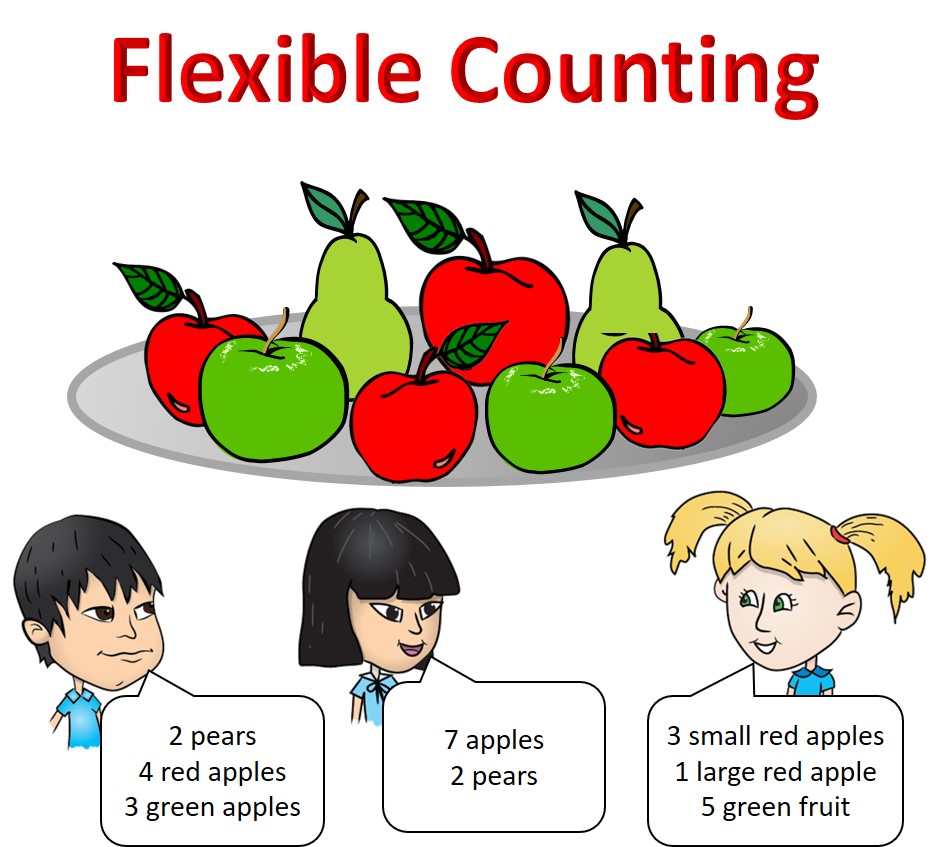
Students should be encouraged to name the whole collection (a bowl of 9 apples) and to explore different ways of describing the parts that make up that whole. This is the root of flexible thinking and the development of mental objects.
Collective Nouns
We often ask ‘how many altogether’ type questions (as we should) but there is also research suggesting that early sorting into collections and naming the groups brings meaning and realism to noticing:
- parts of a whole,
- putting parts together to create a named collection,
- thinking flexibly about how to group, how to split or partition, and
- the development of mental objects.
I spent some time thinking about collective nouns, which by the way includes three distinct groups, people, animals and objects. I began a list:
- a football team,
- a class of student
- a herd of animals,
- a flock of sheep,
- a bunch of flowers,
- a bowl of fruit.
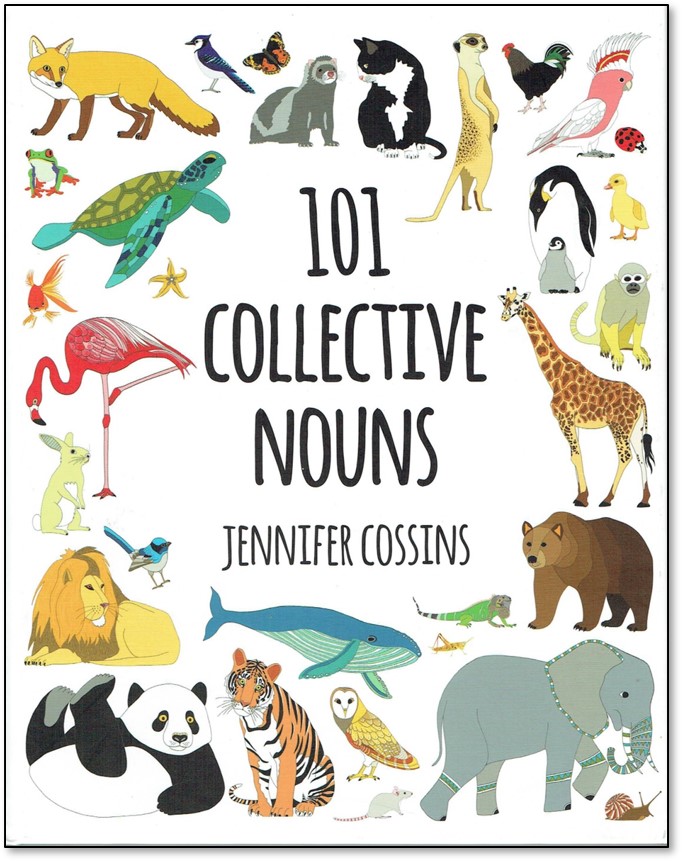
My list was a bit boring and mundane, what to do? Go Christmas shopping of course and make the first stop a bookshop. What a serendipity! What a coincidence there I found this fabulous book of collective nouns. Of course, I had to buy it.
Every page in this beautifully- illustrated book reveals a new and often surprising collective noun and matched collection as well as flexible ways of sorting and counting them. My favourite noun in the book is escargatoire. I bet you can guess what creatures make up an escargatoire.
I have chosen the Cloud of Grasshoppers page to showcase the book and its applications.
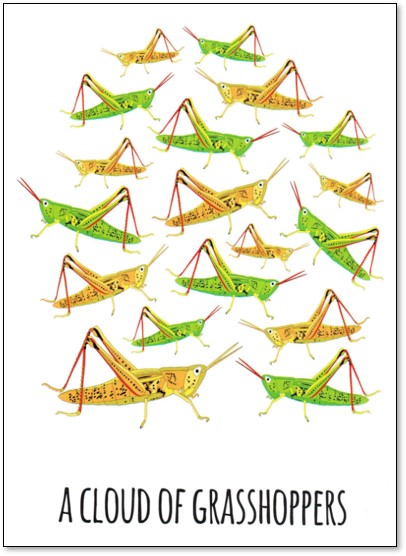
Since there are no numbers to say how many in each collection some form of flexible counting or grouping is needed to answer
“How many in the collection?”
Look at the picture and think about how you might quantify this group. Be flexible, don’t just start top left and count.
Is it easier to count greens then oranges than count them combined? It seemed to me that spotting 2s as a counting pattern was much easier with sorting. Working this way, I was surprised to find 9 of each colour; 18 altogether.
What if we did large and small in each colour? I found 7 large green, and 2 small green, and 5 large orange and 4 small orange, which is the same as 12 large and 6 small. There are still 18.
Shock, horror, now that I’ve tried to be flexible, I just realized that in each case I counted top to bottom. Will our students do that too? We need to remember to ask
“Does it make any difference to the amount when you start the count from a different place?”
Springboard from the book. You have to buy the book and share it with your students, first because it is so much fun, but then, you have options:
- enlarge pages electronically and invite students to find flexible counting patterns and ways of sorting and grouping,
- create matched number sentences each time,
- use clip art and create examples of your own with quantities and groupings matched to your learners, [for instance, you may want to make subitizable groups of 5s that can then be combined into 10s]
- create your own class book or posters of collections of interest to your learners and use in the same way
- challenge your students to create tricky pages to swap with their peers.
For older students
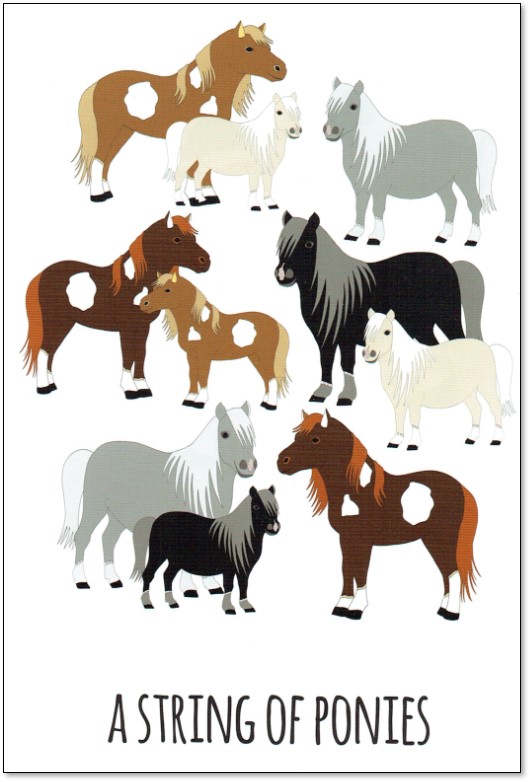
Older students will also be intrigued by the weird collective nouns. Rather than seek simple number statements, push for fractions, percentages and multiplication or proportional statements. Here are some examples of questions that you might use for a string of ponies:
“40% of the ponies are small, what percentage of the ponies are small and black?”
“The ponies I am thinking of are the same colour and size. What fraction of the string are they?
“The spotty ponies represent what percent/fraction of the string.”
“There are twice as many spotty ponies as ____?”
Have fun and a great 2020.
Best wishes,

